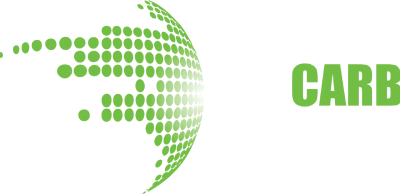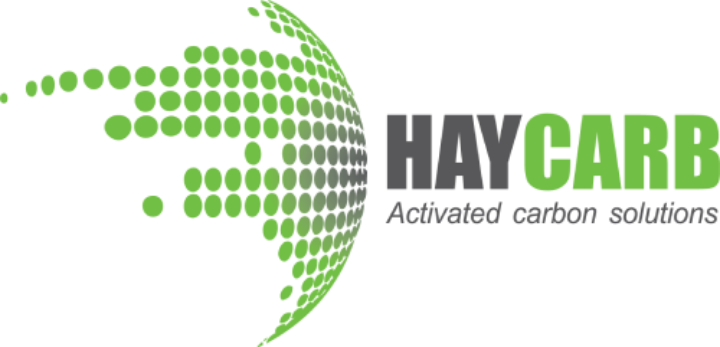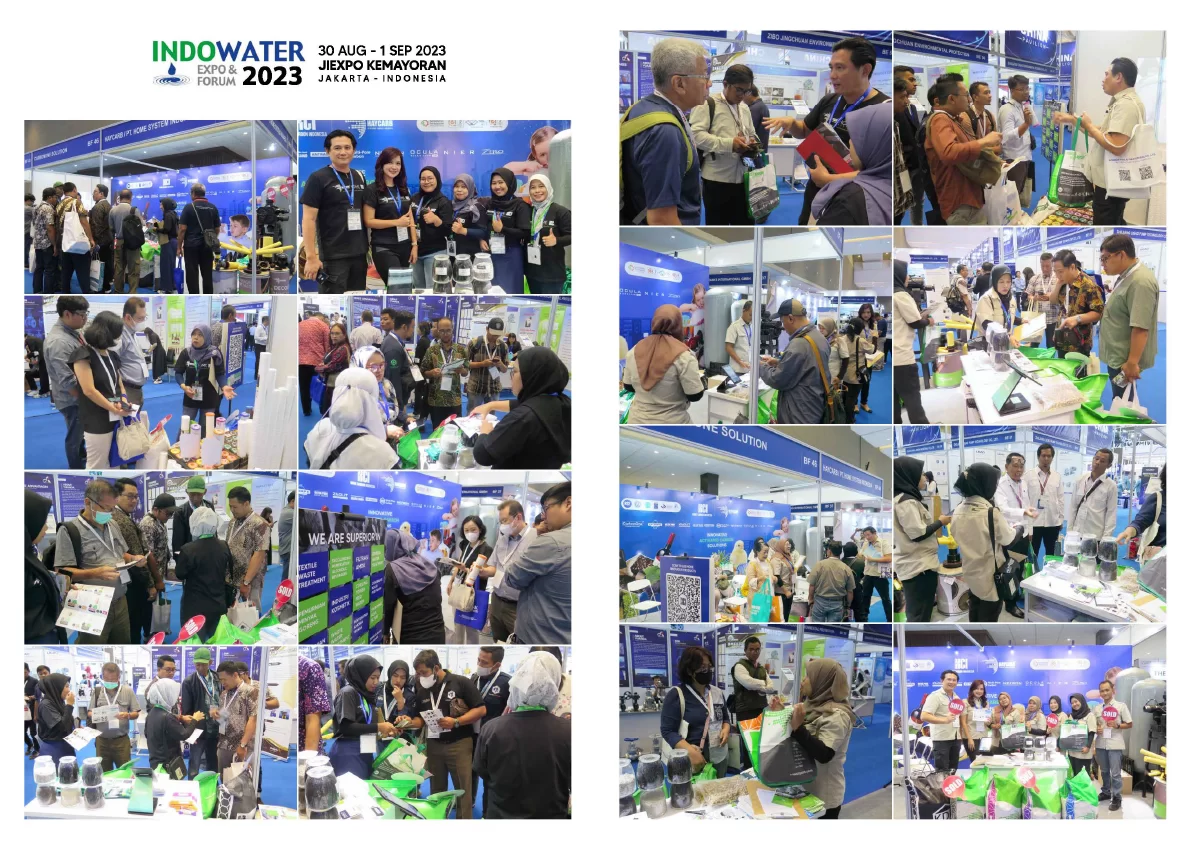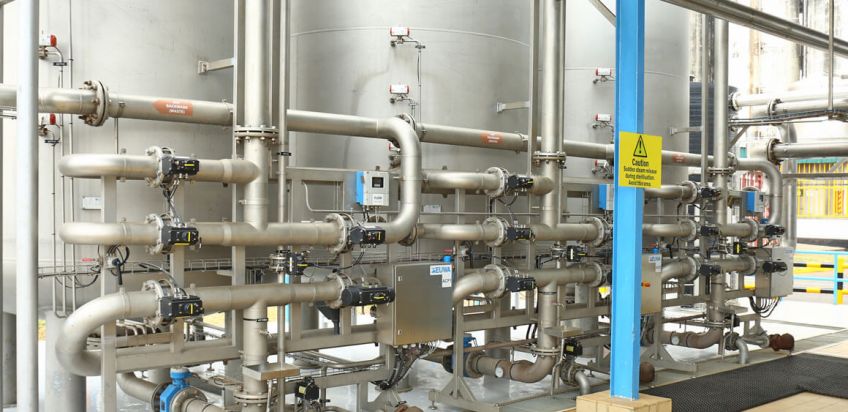
Did you know that 1.8 million people die every year due to contaminated water? According to the World Health Organization, about 1.4% of people suffering from diarrhea have it caused by polluted water. Most of these cases result from the mixing of sewage with fresh groundwater, introducing microorganisms such as viruses, bacteria and disease-causing protozoa into drinking water.
These numbers are staggering and they remind us that water, as pure and crystal clear as it may look, is not always as safe as we assume. These global challenges resonate strongly in regions like the Middle East, where rapid urban growth, water scarcity, and declining water quality have made residential water filtration systems a pressing priority. The Middle East residential water treatment devices market is on a steady upward trajectory, projected to grow from USD 866 million in 2025 to USD 1.43 billion by 2032, achieving a robust CAGR of 7.4% reflecting rising demand for safe drinking water (Source: Coherent Market Insights). Another forecast projects the market surpassing USD 1.24 billion by 2030 (Source: Coherent Market Insights), reflecting strong demand driven by urban expansion, rising populations, and declining water quality. Advanced filtration technologies, such as RO+UV systems, are increasingly sought after to meet the region’s growing need for safe and clean water.
What does drinking water contain?
We rely on water for drinking, cooking, and countless essential tasks, often without realizing its complexity. Yet, the purity of water defines the purity of life itself. However, beneath the surface lies more than meets the eye – microscopic sediments, invisible chemicals, and impurities that flow silently into our lives.
That’s where water filtration steps in. More than a process, it strips away the unseen, revealing water in its truest form. Every glass becomes a promise of safety, every sip a burst of purity, every drop a step toward a healthier, more sustainable life, because pure water doesn’t just quench thirst, it fuels living at its best.
Types of Contaminants Found in Drinking Water
Water isn’t always what it seems. Beneath the sparkle, there may be:
- Trace metals that linger for years
- Perfluorinated Chemicals (PFCs)
- Chemicals that alter taste and smell
- Micro-organisms that risk our wellbeing
Recognizing these hidden contaminants reinforces that water filtration is a fundamental requirement for health, safety and sustainable living.

What Makes Activated Carbon Effective in Water Filtration Systems?
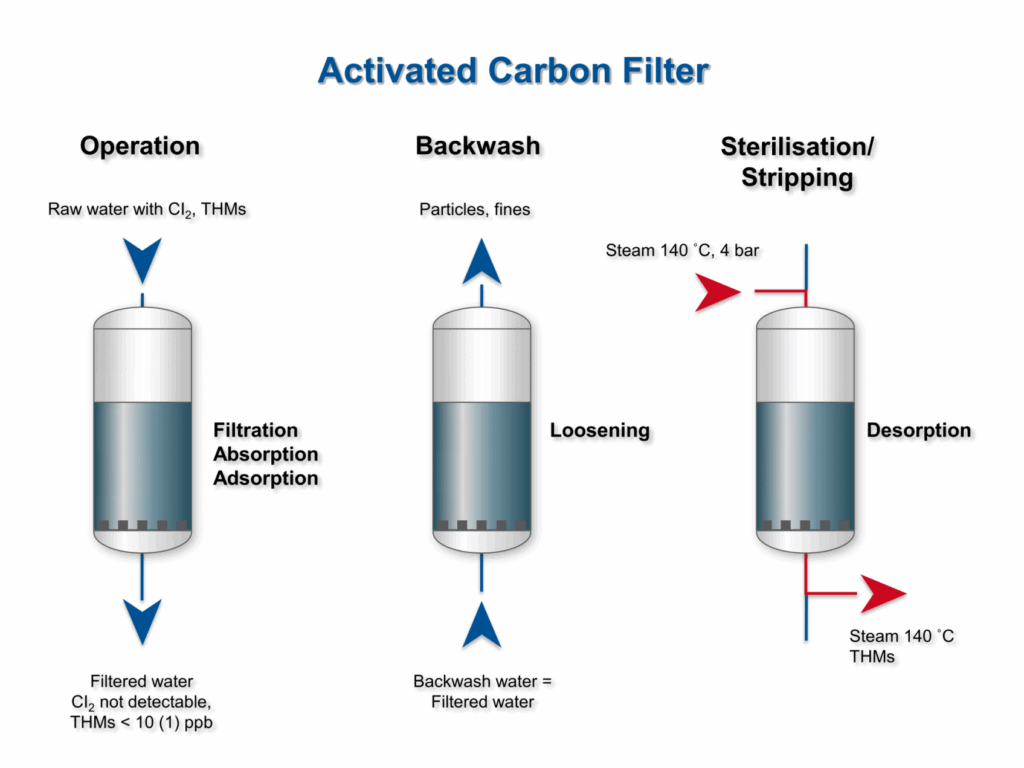
(Source: eEUWA)
To tackle these invisible threats, activated carbon for drinking water has emerged as one of the most effective and sustainable solutions available today.
Born from natural raw materials like coconut shells, it is processed to dramatically increase its surface area reaching an impressive magnitude of over 1000 m²/g. Its structure forms millions of tiny pores between carbon atoms, creating an incredibly high surface area that can trap impurities.
With activated carbon filtration, up to 99% of chlorine and 95% of volatile organic compounds can be removed, while advanced systems can eliminate particles as small as 0.0001 microns.
The result? Water that is not only safe but refreshingly pure, without stripping away essential minerals.
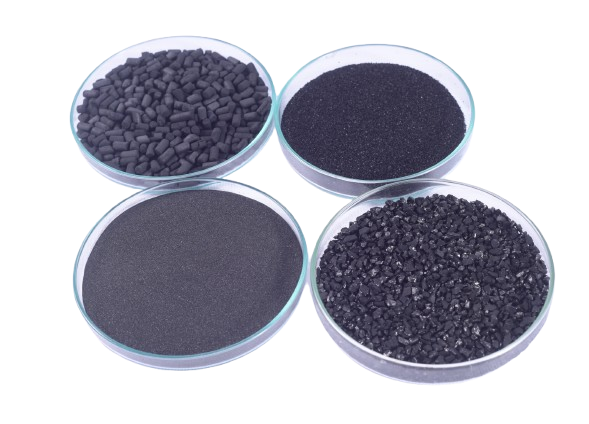
Today, sustainable water solutions powered by activated carbon for drinking water treatment are widely used in households and industries. These systems not only ensure families and businesses have access to safe, clean water but also promote sustainability by reducing reliance on bottled water. Implementing water filtration using activated carbon is therefore a key step towards protecting both health and the environment.
Transformed through science Activated Carbon has become one of the most powerful filtration mediums known today. It’s nature’s gift, refined by human ingenuity and a core solution trusted by industries and households alike.
The Everyday Benefits of Clean and Filtered Water
Filtration is not simply about what fills a glass, it touches nearly every aspect of daily life. It ensures that meals taste exactly as they should, keeps household appliances running efficiently for longer, and helps industries operate with cleaner processes. On a broader scale, it also plays a role in reducing plastic waste, creating a positive impact on the planet.
As stated by UNICEF, clean, filtered water can reduce the risk of waterborne diseases by over 60%, significantly improving public health outcomes. Every filtered drop carries ripple effects that extend beyond personal consumption, influencing health, technology and sustainability.
Shaping a Better Tomorrow with Safe and Sustainable Water
The conversation about water is really a conversation about life. As challenges of scarcity and pollution grow, advanced activated carbon filtration systems play a vital role in protecting health and shaping a sustainable future.
At Haycarb, we see every drop as a promise: a promise of health, of progress and of a cleaner, more sustainable tomorrow. Every glass of pure water is a step towards thriving communities, every drop is a spark of hope for the future we want to build. Through our sustainable water solutions, we aim to make clean water accessible to every home, ensuring that families everywhere enjoy clean water for healthier living.
Because pure water doesn’t just sustain life it transforms it. It shapes healthier lives, fuels progress and secures a future where every drop counts.
FAQs
- Why is water filtration important? – Even clear water may contain harmful microorganisms, chemicals, and trace metals. Filtration ensures water is safe to drink, improves taste, and protects overall health.
- How does water filtration impact daily life beyond drinking? – Filtered water enhances cooking, extends the life of appliances, improves industrial processes, and reduces plastic bottle waste, promoting a more sustainable lifestyle.
- Why is activated carbon considered environmentally friendly?– Activated carbon is derived from renewable natural sources and helps reduce dependence on bottled water, lowering plastic waste and environmental pollution.
- What role does Haycarb play in water filtration? – Haycarb provides advanced activated carbon solutions that ensure clean, safe, and sustainable water, helping communities thrive while promoting health, technology, and environmental responsibility.
- How long does an activated carbon filter last? – Filter lifespan depends on water quality and usage but typically ranges from 3–6 months for household systems. Industrial filters can last longer and require regular monitoring.
- How do I know when to replace my activated carbon filter? – Signs include changes in water taste, odor, or flow rate. Regular manufacturer guidelines should also be followed to ensure optimal filtration performance.
- Is activated carbon safe for daily use? – Absolutely. Activated carbon is non-toxic, derived from natural sources, and widely used in both household and industrial water filtration systems.
- Does activated carbon filtration affect the water’s pH? – Generally, activated carbon does not significantly alter the pH of water. It mainly focuses on removing impurities while keeping water balanced.
- What is activated carbon and how does it work? – Activated carbon is a highly porous material derived from natural sources like coconut shells. Its millions of microscopic pores trap impurities, chemicals, and contaminants, producing cleaner, safer water.
- Can filtered water improve appliance lifespan? – Yes. By removing chlorine, sediments, and scale-forming minerals, filtered water prevents corrosion and buildup in appliances, extending their operational life.

